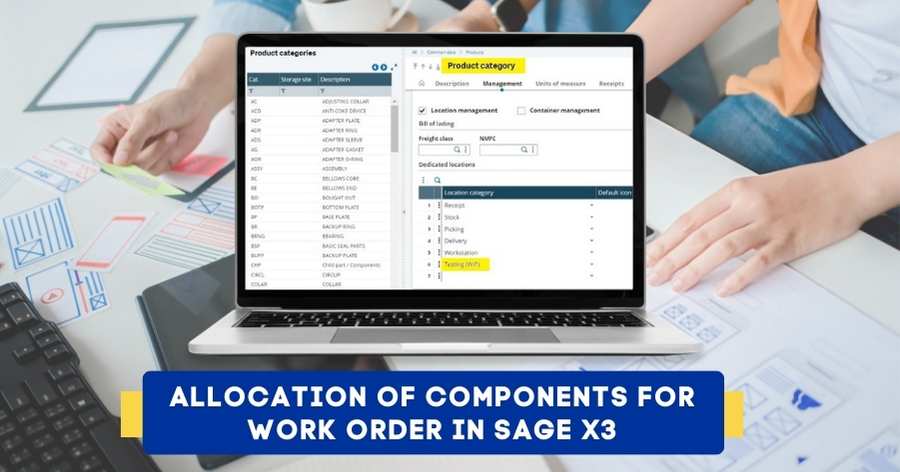Business owners find it difficult to run an enterprise without any complexities. As your business grows, even your warehouses expand. Hence, you will be required to fit a system in place where it can manage both inventory and warehouse efficiently.
One of the factors to successfully run a business is to track information regularly. Information is beneficial to maintain good relationships with investors, customers and buyers. If your business is large, you will have many customers and it will be vital to track demand and supply. With the business growth, your inventory also expands making room for more stocks. Stocks will be stored in the inventory and it is vital to track them.
When you have a large inventory, you will be dealing with multiple warehouses. That’s when you need lot numbers to track the movement of stocks. Let us learn more about the importance of lot numbers in this blog.
What is a Lot Number?
A lot number is a unique number given to a batch of products or a lot of materials from a single manufacturer. These batches must share the same specifications and production date. To successfully manage inventory accurate tracking and proper planning have to be done.
However, there are also internal identifiers such as SKUs(Stock-keeping units). SKUs help in tracking similar kinds of products located in the warehouse. There is also an external metric called UPC(Universal Product Code) which is a numerical identifier given to the vendor by the manufacturer for consistency.
Further, we have these classic codes, a serial number given to the product of a similar type. But all these product tracking methods miss very crucial information such as the measure of time, and location of the batches(particular information of the product such as the place of manufacture or process).
A lot number is also known as a batch number, lot code, or code number. A lot number is created by the manufacturers internally. Lot numbers will give information on shipping time, purchase order time and the time of the receipt. Plus, lot numbers apply to organisations where it is highly regulated and where quality is a priority. Some of these industries are pharmaceuticals, food and beverage, automotive assembly, cosmetics, electronics, medical technology etc.
Even laws are enforced to follow the lot number system, especially for the industries mentioned earlier. Let us take an example of a pharmaceutical company manufacturing vitamins. Let us assume that the company manufactured 900 cases in a single day. So, this particular batch will have the same production date, and similar raw materials(orange-flavoured and powdered).
We have learned that lot numbers are used to track the batches of items in the inventory. Also, lot numbers are essential to track defective products and recall them whenever required. A lot number system will help the company to prevent so many challenges —
- The increasing costs that occur from replacing, retrieving, reimbursing or fixing customers for the affected goods.
- It saves the reputation of the business.
- It can save the business from negatively affecting the cash flow.
- The sharp decline in your company’s stock value.
Hence a lot number can save a company’s working capital, revenue and customer loyalty which together saves the reputation of the business.
How to Identify LOT Numbers?
If you check any package of the product, there will be a lot number mentioned. You will find either series and numbers or it will be in the form of a barcode. Most of the time it will be stamped in the package indicating as lot number or batch number. Lot numbers are printed in all capital letters and it is indicated as LOT#.
In the package, the lot number is mentioned in the back panel and if it is a kit box, it will be mentioned at the top or the bottom of the box. A lot number can have two parts:
→A letter: The month of the product manufactured is mentioned. (A: January, B: February, C: March, D: April, E: May, F: June, G: July, H: August, I: September, J: October, K: November, L: December)
→Series: These are number sequence and it comes after the letters. Given below is the order in which the numbers are printed:
- The initial digit corresponds to the third digit of the production year.
- The subsequent two digits indicate the manufacturing day in a month.
- The following digit signifies the last digit of the production year.
- The next two digits denote the expiry month of the earliest expiring component.
- The final two digits signify the expiration year of the earliest expiring component.
For instance, LOT#C-10121324 indicates the product was produced on October 12, 2023, and the earliest expiry date for any component in the kit is December 2024.
Also Read : How to Create and Allocate LOT numbers in Sage 300?
Importance of LOT Number
Lot Numbers are significant in the supply chain functions, as it eases most of the tasks. Let us look at some of the benefits of lot number tracking which are given below:
Quality Assurance
Quality is the top priority for any company. Hence, when the quality of the products is tested, lot numbers are essential to identify defective goods. Additional information such as product ingredients, production date and manufacturer details are included.
Efficiency in Recalls
Suppose your supplier is recalling a raw material, but you have already manufactured your product and shipped it. In such cases, you will have to check the processing date and lot number to recall the defective product.
Continuously Supports Legal Compliance
Especially in the pharmaceutical and Food and Beverage industries, following all the guidelines is essential. A lot number tracking system is essential for any analysis related to legal requirements. Compliance always gives assurance that the product is safe to consume.
Enhances Supply Chain Visibility
In the supply chain system, the visibility of the product is a crucial factor. Lot numbers can provide end-to-end visibility of the product throughout the supply chain. Lot numbers are essential as the business will be dealing with multiple users, vendors and raw materials. This will help in tracking defective batches instantly. Plus, it will minimise the returns and will enhance consumer satisfaction.
Streamline Inventory Operations
For the FIFO(First in and first out) method, the lot number system is highly beneficial. It helps in eliminating waste and minimises costs. Lot numbers can be used to manage expiration dates. With the lot number tracking, the expiration dates can be identified. On that basis, the products can be prioritised.
What is the Difference Between Lot Number vs. Serial Number vs. SKU?
Lot number, serial number and SKU have a common purpose – product tracking. Let us first learn the differences between these three concepts.
SKUs or Stock Keeping Units are used internally to identify stored inventory. However, these numbers can only identified at the store or with the manufacturer and are not universal.
Serial Numbers are unique numbers which are given to each product to enhance inventory traceability. This number is beneficial for the customer to track warranties and to register the product with the manufacturer.
So, what is a lot number? The lot number is a unique number given to the batches of items which is of similar type. It is crucial for inventory management.
Compared to all three concepts, serial numbers and lot numbers can be combined to get enhanced traceability. Additionally, lot numbers give information on the factors such as location and time.
Also Read : Lot Recalls/ Releases in Sage 300cloud ERP
How to Track LOT Inventory?
If you want to track your inventory efficiently, then you need to look into certain factors more like a checklist. The first major step is to set up a reliable inventory management system to track and store data. Technologies such as ERP software can be implemented for accurate lot tracking. Go through the tips given below:
1. Create an Infrastructure for Tagging and Identification – Tracking of the inventory will become efficient and can ensure that the data is accurate.
2. Maintain a Process for Regularly Documenting Data – This will help in precisely tracking the inventory levels and help in balancing the stocks.
3. Automate Data Collection by using Tools like RFID Tags or Barcode Scanner – Any business can integrate with these tools to ensure accuracy and it saves a lot of time.
4. Execute frequent Checks and Audits – Inaccuracies and any discrepancies can be identified by frequent audits and errors can be eliminated. This will help in accurate inventory tracking.
5. Well-organised and Consise in Data Recording – It will be simplified in tracking inventory and the current trends can be spotted and implemented in the inventory for efficiency.
Conclusion
Lot Number is an efficient system to track batches of items of similar type. It can be implemented to efficiently manage inventory. Lot tracking will help in managing the right stock levels in the inventory. In addition, it enhances the visibility of the stocks moving in the inventory. You can implement a proficient ERP system to manage lot numbers and maintain optimum levels in the inventory.







